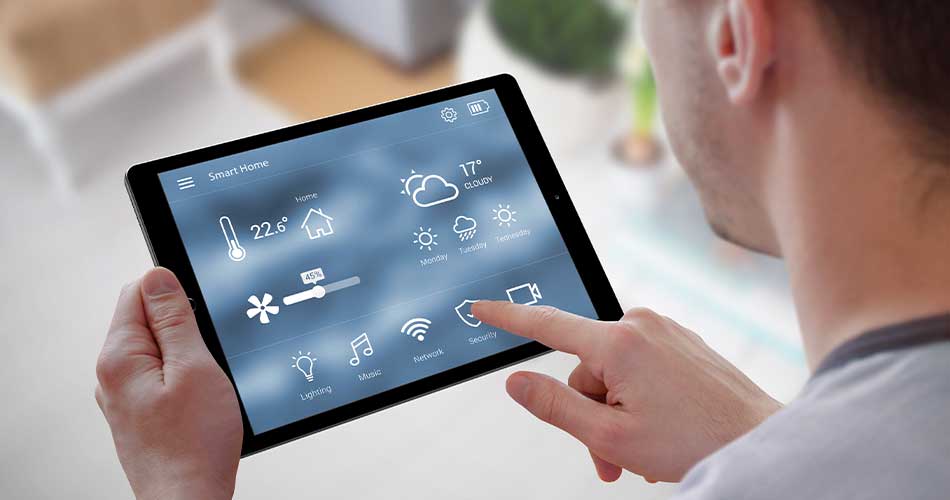By Hillary Johnston
If you’re living alone, you may want the comfort a home security system can provide. If you’re currently enjoying a basic security system, adding home automation to your current home security system may also save you money.
New technology, recent advancements, and more companies offering home automation packages help make it more affordable now to turn any home or apartment into a smart home. You can start saving money on your utilities costs almost immediately, without any major renovations or work to your home.
Control the Temperature
The largest portion of your energy bill likely comes from your heating and cooling costs. The U.S. Energy Information Administration estimates the average U.S. household pays about $100 a month for electricity, with a majority of those costs keeping the motors and compressors in heaters and air conditioners running. Unfortunately, many homes have inefficient systems that use a lot of energy to keep a home cool or warm, even when nobody is home. Home automation can help solve this problem.
Most current home automation systems come with programmable thermostats that allow you to control the temperature in your home, even when you are away. It’s easy to set the temperature from your tablet, smartphone, or laptop making it so you don’t have to cool or heat your home while you are at work, out on a date, or on vacation. You can set the thermostat to kick in before you get home so you have the perfect temperature waiting for you. Let the system do that for you; it’s no fun walking into a cold house after a long day at the office.
Running your air conditioner all day can also impact your electricity bill, but who wants to come home to a sweltering house if you turn it off or a refrigerator from keeping the air on cool all day? Home automation will let you turn your AC on when you need it and keep it off when you aren’t there to use it.
You may also want to consider drape and curtain controllers. Opening and closing the drapes will make it look like someone is home and ward off potential burglars, but it can also keep the sun out and reduce the amount of work your AC will have to do to cool down the house.
Take Care of Small Appliances
How many times have you left home in the morning and thought, “Did I turn the coffee maker off?” There’s no time to turn around and there’s nobody at home to check. That’s where motion sensors that control small appliances can come in handy. As part of a home automation system, motion sensors can control the appliances in your home. When no one is in the room, the motion sensors turn off the coffee maker, curling iron, or candle warmer (whatever small appliance you left on) so you don’t have to worry.
Some systems will let you control appliances remotely as well through a smartphone or a laptop. You aren’t paying for energy those appliances are using up and you also have the peace of mind knowing an electrical fire won’t start from appliances mistakenly left on.
Save Money on Lights
You know the scene. You’re about to leave for the day or head out on a much-deserved vacation and you’re frantically running through the house turning off lights so you won’t have to pay for wasted electricity. There’s no one in the bedroom, bathroom, or living room, so why are the lights on?
On the flip side, it’s never fun to return home to a dark room or stumble in the hallway as you search for the light switch. You don’t want to leave the lights on all day, but you also don’t want to return home to a dark house. Home automation can solve both problems.
Using the same type of motion sensors that are used to control small appliances, you can also control your lights. A motion sensor is installed on the light, enabling the light to turn on when someone enters the room and switch off when the room is empty. You can also pre-set lights to come on at certain times, making it easier and safer to return to a well-lit home at night instead of a dark room. Or, you can choose a home automation system that lets you control your lights remotely as well.

